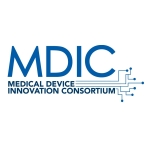ARLINGTON, Va.–(BUSINESS WIRE)–#MDIC–The Medical Device Innovation Consortium (MDIC) has announced the release of Best Practices for Communicating Benefit, Risk, and Uncertainty for Medical Devices. The report focuses on providing evidence-based best practices for enhancing communication with patients about medical devices so that patients can make informed treatment decisions.
“Patients considering a medical device need to understand the implications of available treatment options. This report helps decision-makers better understand how to communicate in ways that will resonate with patients,” said Scott Goates, PhD, Senior Advisor of Health Economics and Outcomes Research at Abbott and Chair of the Science of Patient Input Communication Working Group. The working group wrote the report on behalf of MDIC’s Science of Patient Input Steering Committee.
A Focus on the Patient’s Perspective
The MDIC report identifies characteristics of providers and patients, and the way in which the scientific and medical information is disseminated, that can affect patients’ comprehension and decision-making.
“The patient perspective that is included in this report will help physicians and medical device manufacturers understand what patients really need,” says heart patient and patient advocate Heidi Dohse. “This report provides patient insights in a way that is actionable for physicians and medical device manufacturers.”
Dohse has been living with pacemakers for 37 years, since she was diagnosed with irregular junctional tachycardia at age 19. Back then, no one told her that there were different types of pacemakers and her first pacemaker wasn’t responsive to her needs as an athlete. Within six months, Dohse had a second procedure to replace her first pacemaker with another pacemaker that was better suited to her needs and goals. Dohse shares her story in the report.
“Patient engagement during the treatment decision-making process is key. This requires that all medical device stakeholders understand how to appropriately communicate with patients about medical devices,” said Pamela Goldberg, MBA, President and CEO of MDIC. “The report is a practical resource that summarizes key terms and provides evidence-based tools, and resources to help develop an effective communication strategy.”
The report is also part of a larger movement to “make sure the patient’s voice is front and center in making decisions about medical devices,” said Goates. That movement includes MDIC’s Science of Patient Input program, which focuses on integrating the patient’s perspective and preferences in the design, clinical development, and regulatory review of innovative medical technologies.
“It’s really important that MDIC is including the patient voice and listening to the patient perspective,” said Dohse.
Read Best Practices for Communicating Benefit, Risk, and Uncertainty for Medical Devices.
Register for the webinar on communicating benefit, risk, and uncertainty for medical devices on Friday, October 2, 2020 at 2 pm ET.
About the Medical Device Innovation Consortium
Founded in 2012, the Medical Device Innovation Consortium (MDIC) is the first public-private partnership created with the sole objective of advancing medical device regulatory science throughout the total product life cycle. MDIC’s mission is to promote public health through science and technology and to enhance trust and confidence among stakeholders. MDIC works in the pre-competitive space to facilitate the development of methods, tools, and approaches that enhance understanding and improve evaluation of product safety, quality, and effectiveness. Its initiatives aim to improve product safety and patient access to cutting-edge medical technology while reducing cost and time to market. For more information, visit https://www.mdic.org.
Contacts
Taylor Jackson
tjackson@mdic.org
+1 202.510.9391

